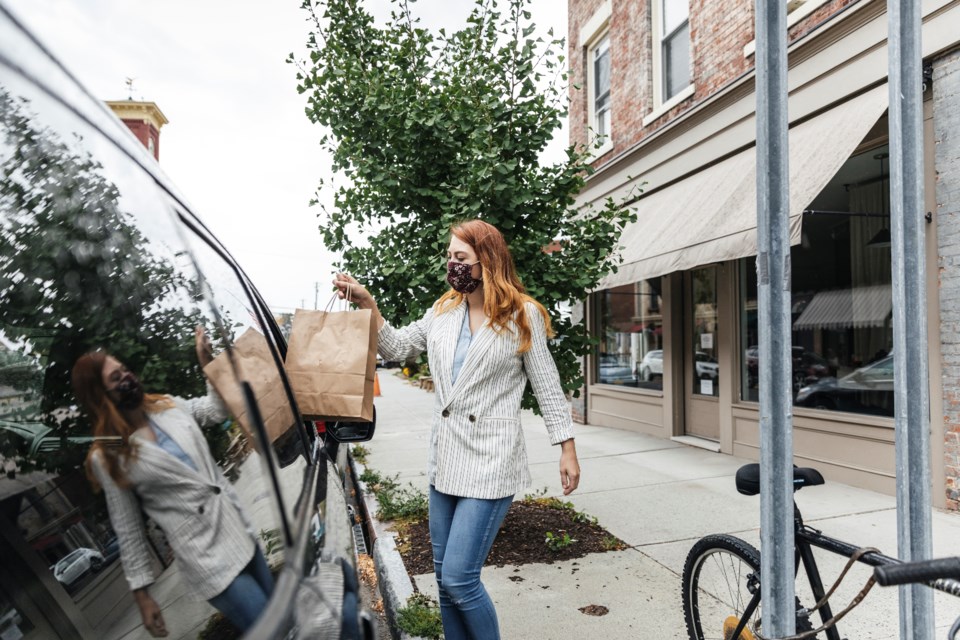As we noted in a previous issue, the shop local trend is not new. The evidence of century old archives from the Virden Empire-Advance showed us that retailers have always tried to keep their customers close to home.
Shopping local is the act of everyday consumers, like you, making the decision to buy your produce, clothing and day to day items from a local business instead of going to a large retailer.
The shop local trend can help build relationships within the community and support the local economy.
Looking west to Saskatchewan we find a developing provincial store for a growing variety of goods and services, all produced and provided from within the province.
In Winnipeg, former Blue Bomber Obby Khan and a partner have started a similar business, with over 350 outlets and plans to go province wide.
According to the US Chamber of Commerce, consumers spent heavily in support of local businesses during the COVID-19 pandemic, accelerating the “buy local” trend that had long been gaining traction. More than half of consumers said they shopped more at small and locally owned businesses during the pandemic, and 40 per cent continue to do so.
Since the coronavirus pandemic began, consumer behaviour has changed, with more shoppers seeing their local food shops and independent businesses in a new light. Support for independents has soared as they showed their value in terms of their unique offering, first-rate shopping experience and convenience for the customer. This retail trend will not peter out – in fact, recent research by the global tech company ThoughtWorks found that only half of consumers (49%) expect to buy their food from supermarkets or major retailers in the future.
So, what keeps people shopping in their home communities? We all know that the Amazons and Walmarts of this world can undercut a small business every time. There is something more than the cost of an item at work here.
A study by Red Egg Marketing reveals that 82 per cent of shoppers will pay more to support small businesses. In fact, those who do shop locally say they will continue to do so to boost the businesses in their community even if it means paying more.
Others (54.39%) say they shop locally as they find the goods and services of better quality. While 30.85 per cent point towards having those products and services easily accessible locally.
This highlights the need for businesses to work on their digital outreach to convert prospects to customers. Reaching out to existing customers alone will not cut it.
Innovation and technology adoption is essential for businesses to remain resilient. It is important for businesses to be open to innovative ideas and offer competitive, quality products. It is equally important that businesses focus on strengthening connections with customers. As a business, understanding the habits and preferences of customers will help you deliver better solutions to your customers. Moreover, by delivering on these needs you are showing them your business is meeting their expectations.
Matt Crowell of Getintheloop, a Canada-wide shop local website notes that until COVID, adoption of digital technology was comparatively slow, with less than 30 per cent of small or medium businesses (SMBs) offering eCommerce and less than 25 per cent investing in digital marketing. Today, as more national and local retailers turn to e-commerce, delivery, and digital tools to stay in touch and stay in business, the commercial landscape has seemingly changed forever. According to the Harris Poll this summer, now 63 per cent of SMBs offer eCommerce, with another 14 per cent planning to add eCommerce to their strategy over the next 12 months. The driving factors for adopting this technology have been to continue serving customers safely, customer convenience, and remaining competitive.
For many small and medium sized businesses, the biggest barrier to adopting an online purchase strategy is the technology needed to pull it off. Without the economies of scale that are available to large retail chains the change to a bigger online presence may seem out of reach for some.
It looks like we need local solutions to the technology and marketing aspects of the new version of shop local.




